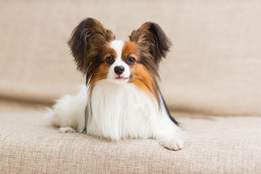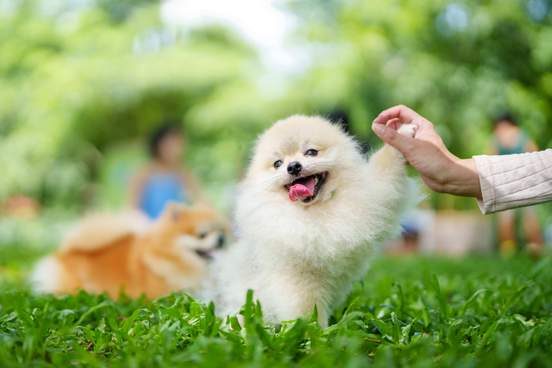
It's a Doggy Dog World
Bow wow wow, yippee oh, yippee yay, the words used for dogs bring us to another day. At the time of this writing there are approximately
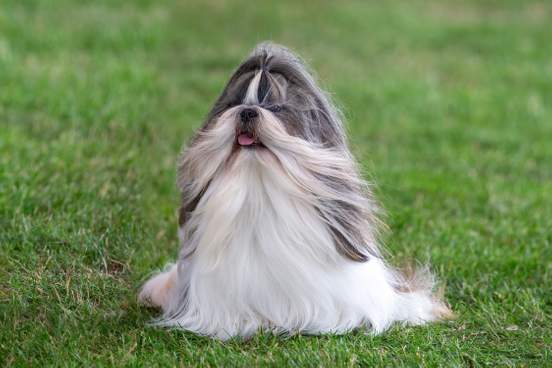
Shih Tzu
Definition: any of an old Chinese breed of toy dogs that have a square short unwrinkled muzzle, short muscular legs, and a long dense flowing coat
The Shih Tzu was developed from the Pekingese and the Lhasa Apso. The name for this little lionlike dog comes from the Chinese shīzi (gǒu), from shīzi “lion” + gǒu “dog.” The lion is a prominent symbol in Buddhism, the religion of Tibet, where the breed was developed more than 1,000 years ago and where Tibetan monks frequently gave the dogs as gifts to Chinese royalty.
... a Shih Tzu puppy is particularly beguiling, an irresistible ball of animated fluff, guaranteed to steal your heart in short order.
—Ann Seranne, The Joy of Owning a Shih Tzu, 1982
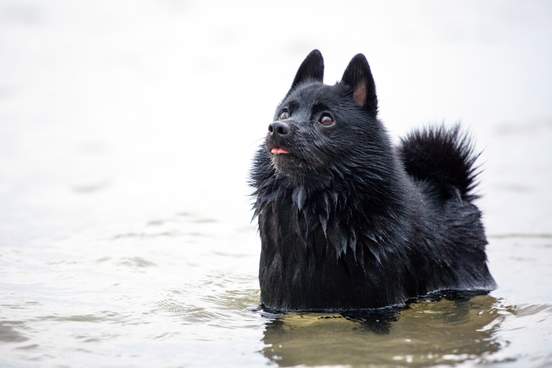
Schipperke
Definition: any of a Belgian breed of small stocky black tailless dogs with foxy head and heavy coat
Schipperkes are widely believed to have gotten their name from a diminutive of the Dutch word schipper, meaning “bargeman” or “boatman” (whence also skipper, allegedly alluding to the use of such dogs on canal boats as watchdogs or rodent catchers. It is claimed, however—as, for example, on the website of the Belgian kennel club, the Société royale Saint-Hubert—that the original word in the regional Dutch around Brussels and Leuven in Brabant, where the dog is said to have originated, was scheperke, a diminutive of scheper, meaning “shepherd.” While schipperke is definitely a borrowing from regional Dutch, its ultimate origins are thus uncertain.
The Schipperke’s disposition is most affectionate, tinged with a good deal of jealousy, and even when made one of the household he generally attaches himself more particularly to one person, whom he “owns,” and whose protection he deems his special duty. These qualities endear the Schipperke as a canine companion, with a quaint and lovable character; and he is also a capital vermin dog. When properly entered he cannot be surpassed as a “ratter.”
—E. B. Joachim, The New Book of the Dog, 1907
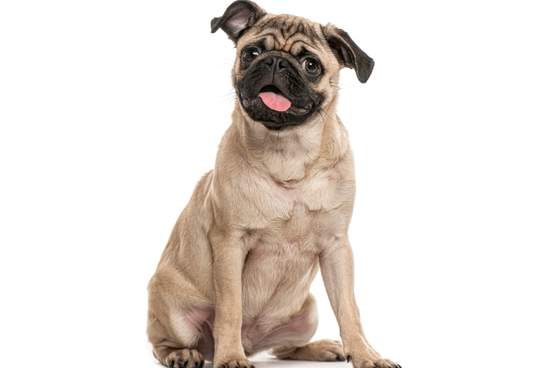
Pug
Definition: any of a breed of small sturdy compact dogs of Asian origin with a smooth, short coat, tightly curled tail, short muzzle, and broad wrinkled face
There are a handful of pugs in English, each with its own etymological origins. The pug that is used for the footprint of a wild mammal (also called pugmark comes pag, a word in both Hindi and Urdu meaning “foot, step.” Boxers—the fighters, not the dogs—are also sometimes called pugs, but in such cases pug is a shortening and alteration of pugilist. The canine pug, however, comes from an obsolete English word meaning “hobgoblin” or “monkey.” Pugs probably originated in China and were introduced to England near the end of the 17th century by Dutch traders.
When one of Mrs. Smythe’s best loved pugs had fallen ill of congestion of the liver, she had had tan-bark put upon the street in front of her house …
—Upton Sinclair, The Metropolis, 1908
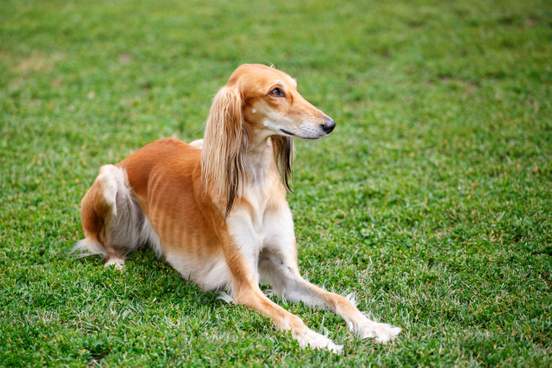
Saluki
Definition: any of an ancient northern African and Asian breed of tall swift slender hunting dogs having long narrow heads, long silky ears, and a smooth silky coat
The ancestors of the Saluki may date to 7000 to 6000 BCE. The breed was popular throughout the ancient Fertile Crescent (from northern Egypt, across northern Arabia, and into the Middle East); the animal was depicted in carvings and paintings, on pottery, and in tombs in ancient Egypt and Mesopotamia. Sacred to the Egyptians, who called it the “royal dog of Egypt,” the Saluki was popular with the pharaohs and was used to hunt gazelles. More commonly, Salukis were kept by Bedouin nomads to hunt hare and other prey for sustenance. The word Saluki comes from the Arabic salūqī, meaning “of Saluq,” from Salūq, referring to Saluq, and ancient city in Arabia.
Quite a new interest may be stimulated among owners of Russian Wolfhounds, Greyhounds, and other breeds of coursing dogs if speed contests should be arranged with them against the Salukis, which have very recently been introduced into this country. The Saluki or the Gazelle Hound, is accredited with being the most ancient breed of dog in the world, but is very little known here. In England the breed is steadily growing in popularity, though very difficult to obtain.
—Mrs. Jade Wilson, Town & Country, Volume 81, 1926
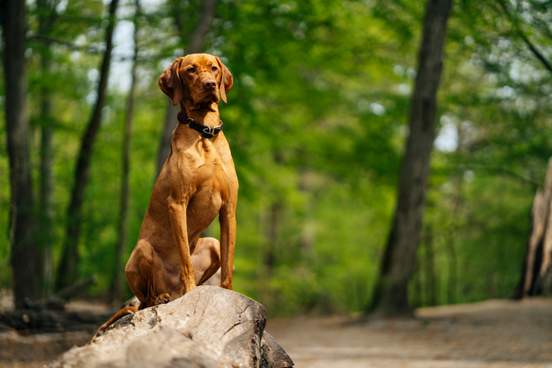
Vizsla
Definition: any of a breed of hunting dogs of Hungarian origin that resemble the Weimaraner but have a rich deep red coat and brown eyes
Vizslas, named after a town in Hungary, are a breed of sporting dog whose ancestors were probably brought to Hungary by the Magyars more than a thousand years ago. The dog can generally work both as a pointer and as a retriever. Developed on the open plains of Hungary, it was bred to be a swift and cautious hunter, wary of alerting its quarry.
It is thought that the modern Vizsla is descended from the hunting dogs which had been crossed first with other native dogs, then with the Turkish ‘yellow dog’ when the Turks invaded and occupied Hungary during the 16th and 17th centuries.
—Gay Gottlieb, The Hungarian Vizsla, 1999
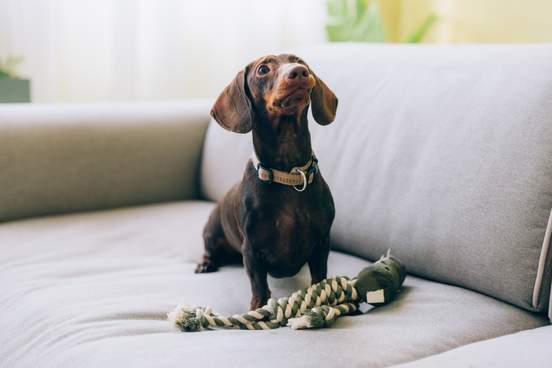
Dachshund
Definition: any of a breed of long-bodied, short-legged dogs of German origin that occur in short-haired, long-haired, and wirehaired varieties
Dachshund is of German origin, as is the breed itself. Indeed, in German Dachs means “badger” and Hund means “dog.” Dachshunds have both hound and terrier ancestry, and were developed in Germany to pursue badgers into their burrows. As such, it can be fearless, relentless, and even reckless—more terrier-like in disposition than hound-like. However, its hound heritage entices it to follow animal scent trails when it comes across them, and it may ignore pleas to return.
The PUPILS stand at easels, painting. The YOUNG ARTISTS move from easel to easel, instructing, pointing out defects, sometimes taking the brush and making corrections—with now and then a remark; they presently gather around a pupil. Rather large picture of a Dachshund—visible to audience.
EVEREST: That dog’s not right.
—Mark Twain, Is He Dead? A Comedy in Three Acts, 1898
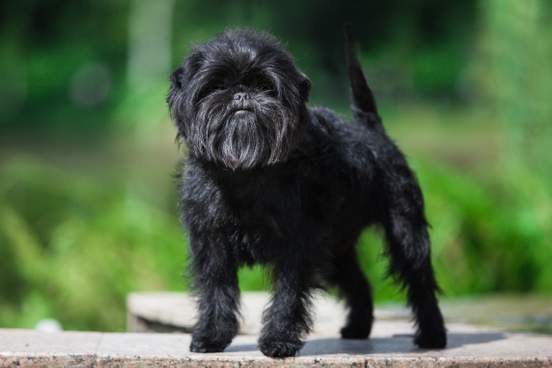
Affenpinscher
Definition: any of a breed of toy dogs with a wiry black, red, tan, or gray coat, erect ears, large round eyes, and bushy eyebrows, chin tuft, and mustache
Pugs aren’t the only dogs named for their simian qualities. Affenpinscher is a borrowing from German, where Affe means “monkey” and Pinscher refers to any of various small to medium dog breeds with docked tails and cropped ears (it’s possibly borrowed from the English Pincher, a given name for dogs in the early 19th century). Affenpinschers are thought to have originated in Germany, where they were bred to be ratters—to kill rats, mice, and other small vermin.
There is a smooth-coated variety of the German Pinscher, and mention may also be made of the Affenpinscher, or Monkey Terrier, a small, wire-haired lady’s dog, somewhat resembling the Brussels Griffon. These Monkey Terriers are becoming somewhat fashionable outside of Germany, and occasionally they have ben imported into England.
—Robert Leighton, The New Book of the Dog, 1907
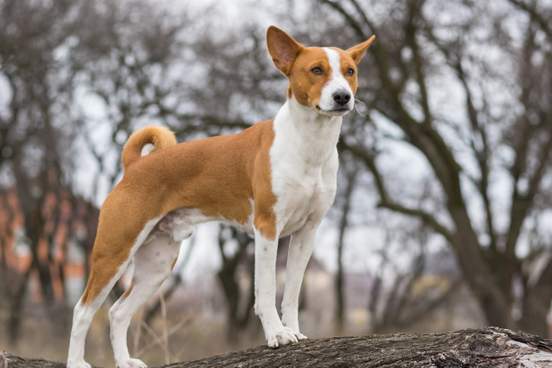
Basenji
Definition: any of a breed of small curly-tailed dogs of African origin that do not bark
The basenji is an ancient breed of hound native to Central Africa, where it has historically lived as a village dog (one that roams free and belongs to no one). The basenji is one of the oldest breeds in the world, with depictions of the animal found in African cave paintings from the Stone Age and on tombs in ancient Egypt, where it was perhaps bred as a house dog. Basenji is probably a modification of the Lingala phrase mbwa na basenji, literally, “dogs of the bushland people.”
Basenjis do not bark but can whine, growl and yodel. … They are gentle and loving by nature, particularly with children. This breed is going places, earning new friends every day.
—Mrs. Clarence Barrows Jr. (letter to the editor), Life Magazine, 21 Feb. 1949
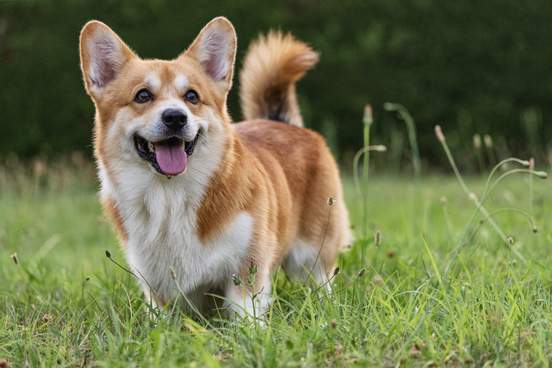
Corgi
Definition: a short-legged long-backed dog with foxy head of either of two breeds of Welsh origin (Cardigan Welsh corgi and Pembroke Welsh corgi).
The Cardigan Welsh corgi can be traced back to dogs brought to Cardiganshire, Wales, by the Celts about 1200 BCE. The original type was known as the Bronant and was possibly related to the progenitors of the Dachshund. The Pembroke Welsh corgi is descended from dogs brought to Pembrokeshire, Wales, between the 10th and 12th centuries by Vikings, Flemish weavers, or both. Corgi comes from Welsh, from cor (“dwarf”) + ci (“dog”).
But it seems Her Majesty discovered he had a way with the corgis. They didn’t lunge for his ankles the way they did with other footmen who are, to corgis, what postmen are to other breeds waiting in front gardens in less palatial British homes. The corgis—Fable, Myth, Kelpie, Pharos, Spark, Joan, Diamond, and Phoenix—actually liked him.
—C. C. Benison, Death at Sandringham House, 1996
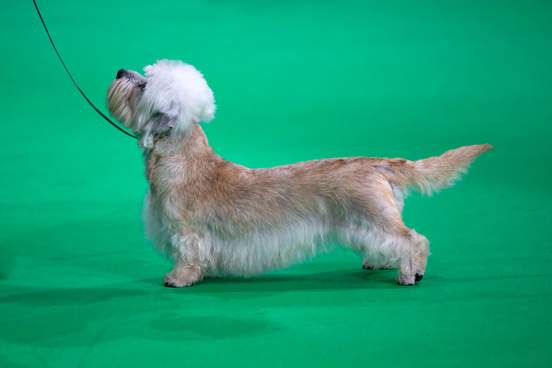
Dandie Dinmont Terrier
Definition: any of a breed of terriers characterized by short legs, a long body, pendulous ears, a rough coat, and a full silky topknot
The Dandie Dinmont terrier breed developed in the border country of England and Scotland. First noted as a distinct breed about 1700, it was later named after a character created by Sir Walter Scott in his 1815 novel Guy Mannering (Dandie Dinmont owned six such dogs; he did not, presumably sport a full silky topknot). Terrier comes from a medieval French phrase, chien terrier, literally “earth dog.” The terr- in terrier comes ultimately from Latin terra, meaning “earth.” Terriers were original used in hunting to dig for small animals and force them from their holes.
In publishing this small treatise it would almost seem that some apology is due, for there is an impression in many quarters that the history and characteristics of the Dandie Dinmont Terrier are subjects exhausted long ago. This may be true as regards a few of the leading breeders whose knowledge of the Pepper and Mustard race is doubtless extensive, but as regards those of the general public interested in the breed it is undoubtedly not so, for, notwithstanding the oceans of printer’s ink which have been spent during the last twenty years anent this game little dog, there still exists much ignorance concerning the breed.
—Charles Cook, The Dandie Dinmont Terrier: Its History and Characteristics, 1885
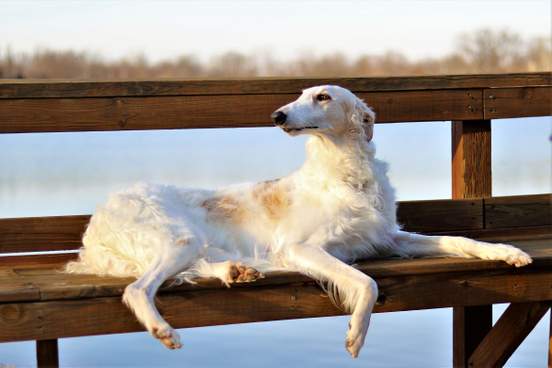
Borzoi
Definition: any of a breed of large dogs developed in Russia especially for pursuing wolves that have a long silky usually white coat with darker markings
The borzoi, also called the Russian wolfhound, is—appropriately enough—a breed of large hound developed in Russia to pursue wolves. It is descended from the Arabian Greyhound and a collie-like Russian sheepdog. Borzoi comes from the Russian word borzoĭ, meaning “swift.” Borzois are gentle, sensitive dogs that enjoy taking life easy. Given an active outing or two a day, they are content to lounge around the house, preferably on a cold floor.
I was the girl stepping out into the sunshine with two rented borzoi dogs on two leashes, the dogs’ heads high and elegant, my head high and elegant, framed by twenty-inch straight blond hair in the style of the day.
—Joyce Carol Oates, Do With Me What You Will, 1973
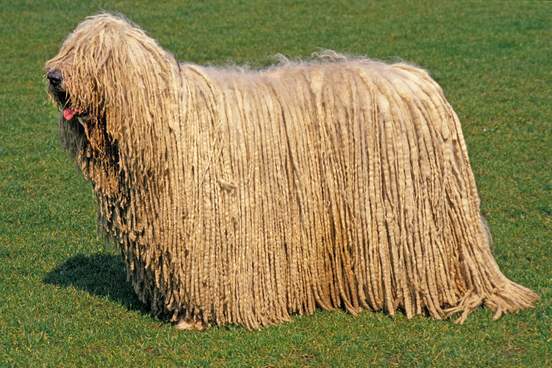
Komondor
Definition: any of a breed of large powerful shaggy-coated white dogs of Hungarian origin that are used to guard sheep
If you want a dog that looks like it’s covered in yarn or rope, the komondor is where it’s at. The komondor is a large Hungarian sheepdog breed taken to Europe in the 9th century primarily to protect, rather than to herd, flocks of sheep. When an adult, the dog is covered from head to tail in heavy, tassel-like white cords, which are woolly in texture. The coat was left tangled by Hungarian shepherds, for it provided the dog with excellent protection from the fangs of wolves and other predators.
ODELAY. Beck (June 1996). The head of a mop, leaping a hurdle? Seriously? Ah, but that’s no mop. That’s a Komondor—a rare breed of Hungarian sheep dog. Pressed for time, Beck figured the dog might create enough curiosity to pique the interest of his record-buying fans.
—Charles Apple, The Spokesman-Review (Spokane, Washington), 18 June 2021
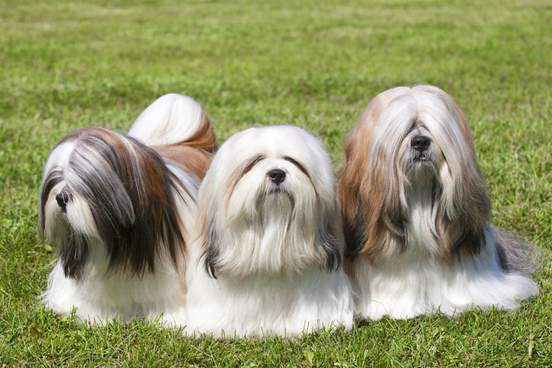
Lhasa Apso
Definition: any of a Tibetan breed of small dogs that have a dense coat of long hard straight hair, a heavy fall over the eyes, heavy whiskers and beard, and a well-feathered tail curled over the back
The Lhasa Apso combines the name of the capital of Tibet (Lhasa) with the Tibetan (Lhasa dialect) word ə̄bsɔɔ̀ (written Tibetan absog), meaning “small hairy dog, Lhasa Apso.” Lhasas were bred by Tibetan monks who used them for centuries as guard dogs at palaces and monasteries, and their thick heavy coats provided the animal with warmth and protection in Tibet’s high-altitude terrain. According to Tibetan folklore, the dog is the living incarnation of the revered Snow Lion, the mythical protector of Tibet that is depicted on its flag. The breed has also been considered sacred, because the dog supposedly provided the souls of deceased lamas with temporary shelter while they awaited reincarnation into another human form.
Norbu stands quietly, his black hair now completely covering his eyes, his beard reaching to the street, thick, shaggy hair covering him so completely, one woman asks which end is which. Others compare him to an animated dishmop and an apartment-sized sheep dog. ... The creature that everyone is ogling, the new dog of the moment, is the Lhasa Apso ...
—Leslie Aldridge, New York Magazine, 22 July 1968
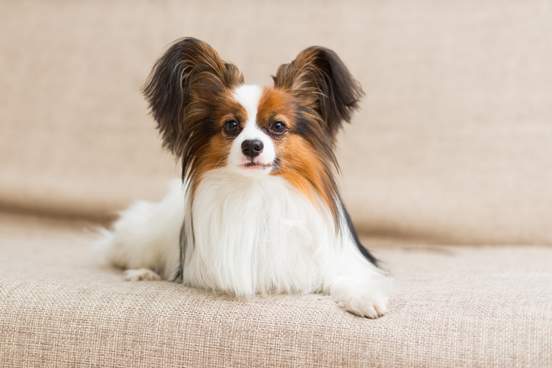
Papillon
Definition: any of a European breed of small slender toy spaniels having large erect heavily fringed ears
Papillon is a breed of toy dog known from the 16th century, when it was called a dwarf spaniel. A fashionable dog, it was favored by Madame de Pompadour and Marie-Antoinette, and it appeared in paintings by some of the Old Masters. The name Papillon (French for “butterfly”) was given to the breed in the late 19th century, when a prick-eared version, with large, flaring ears resembling the wings of a butterfly, came into vogue. The original version with drooping ears, now less popular, can be born in the same litter.
Papillons are companion animals who love to play and just be dogs. Given a choice, a Papillon would much rather be running around the house chasing a ball than sitting quietly. Not hyper dogs, Papillons are outgoing, with a fun-loving personality.
—The American Kennel Club, The New Complete Dog Book: 23rd Edition, 2023
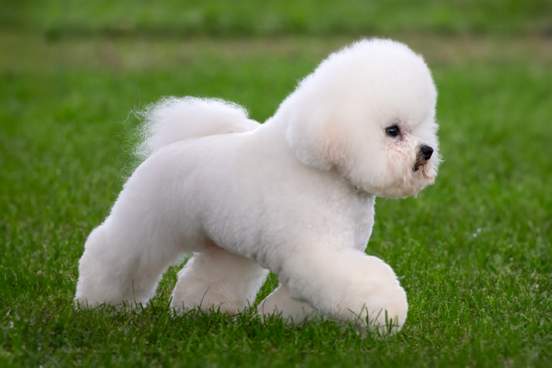
Bichon Frise
Definition: any of a breed of small sturdy dogs of Mediterranean origin having a thick wavy white coat
Bichon frise is a breed of small dog noted for its fluffy coat and cheerful disposition. For many centuries it was known as the “Bichon” or “Tenerife.” Bichon frise is a modification of the French bichon à poil frisé, meaning “curly-haired lapdog.” The Bichon Frise originated in the Mediterranean area, as did other breeds of Bichons—for instance, the Maltese, Bolognese, and Havanese—to which the Bichon Frise is related. Spanish sailors are believed to have introduced Bichons Frises to Tenerife, the largest of the Canary Islands in the Atlantic Ocean, and there, in the 14th century, Italian sailors found them and returned them to Europe.
“They look so serious sitting there,” I said one night to Elizabeth. They’d been outside Peterson’s house by then every night for seven nights. Elizabeth watched them. “They’re Bichons, you know. Bichon Frise is the name of the breed,” she said. “They spend their lives as someone’s fluffy lap dog—they’re descended from the water spaniel, they used to go on boats—when they die, they die pissed off that no one ever took them seriously.”
—Deborah Coates, Fantasy & Science Fiction, Volume 92, Issue 5 (May 1997)
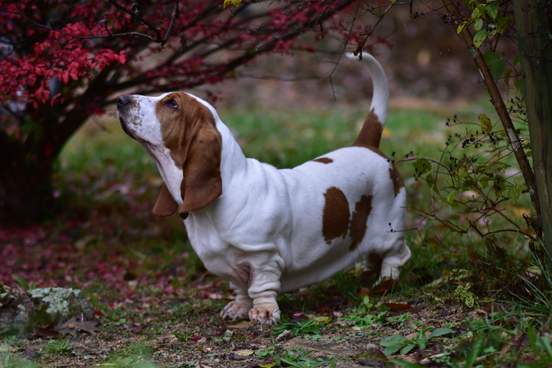
Basset
Definition: any of an old breed of short-legged hunting dogs of French origin having very long ears and a short smooth coat
Bassets, or basset hounds, were developed centuries ago in France and long maintained, chiefly in France and Belgium, as hunting dogs of the aristocracy. Originally used to trail hares, rabbits, and deer, bassets have also been used in hunting birds, foxes, and other game. They have been characterized as slow, deliberate hunters, with a deep voice and a “nose” second in keenness only to that of the Bloodhound. Basset comes from the Middle French word basset, meaning “short,” which in turn comes from bas, meaning “low.”
In the ringed and shadowy eyes of animals, more clearly than in the secretive countenance of man, is expressed the mystery, the dark sorrow of existence. Of all beasts, dogs are perhaps the most melancholy in their looks; of all dogs, the slouching basset hound is the most sad. Of all basset hounds, none is more woebegone, more tragic than a certain basset hound puppy. Last week he sat nuzzling his weak chin into the loose bib of flesh which an arbitrary heredity has draped around his neck.
— Time, 27 Feb. 1928
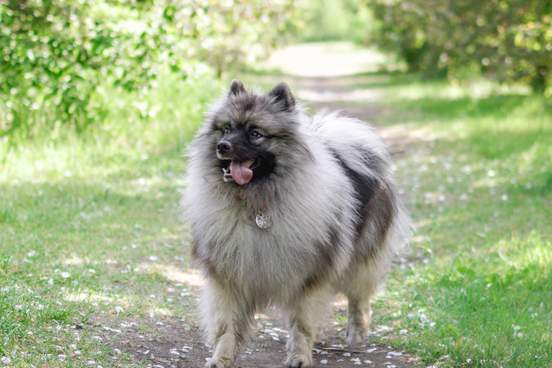
Keeshond
Definition: any of a Dutch breed of compact medium-sized dogs that have a dense heavy grayish coat and a foxy head
Keeshond (plural keeshonden) comes from Dutch, probably from Kees, a nickname for Cornelis (“Cornelius”) + hond, meaning “dog.” The keeshond is the national dog of the Netherlands and a symbol of Dutch patriotism. Long kept on Dutch barges as a watchdog, companion, and ratter as the boats navigated the country’s canals and rivers, it became known as the “Dutch Barge Dog” and was considered an onboard mascot of good luck.
Thought to have descended from Scandinavian sled dogs, keeshonden are compact animals with ravishingly thick fur and tightly curled, plumed tails. … Gentle by nature, and quite glamorous in appearance, they make exceptional companions for people who don’t necessarily fancy outdoor sports.
— Eric Swanson, We’re Having a Puppy! From the Big Decision Through the Crucial First Year, 1997
